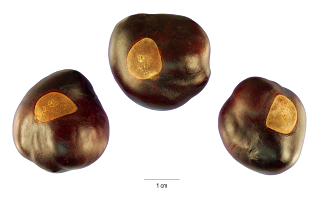Ready for a Foliage Friday update? I hope so! Here is your friendly plant post, where I talk about a plant I love and hopefully convince you to either plant it or just be more knowledgeable about it.
Plant: Ohio Buckeye, Aesculus glabra
Why: Surprise! Yet another tree, and yet another option for my parents to consider for their front yard if we replace their ugly silver maple. Now, honestly this tree has a few liabilities, which I'll explain in a bit, but I had to go over it anyway. First, my mom is from Ohio, where their state tree is the buckeye. Second, this tree is commonly overlooked because of its fruit liability, but it has some lovely qualities as a landscape tree! And third, I tried teaching Erin about this tree when we were in Central Park in April... I thought it would be fun to jog her memory. :)
 |
| Ohio buckeye in mature form |
Landscape uses: Starting off with its form, I can only describe it as a lollipop. Do you remember drawing trees as a kid? Stick for the trunk and a green, round poof for the leaves? That is sort of what this tree looks like from afar. Classic form! It is usually 30 feet or so tall, but can get up to 80 feet.
In the spring and summer, the Ohio buckeye has a deep green leaf color, and in fall typically has orange-ish, red-ish leaves. Refreshing from the commonly seen yellow leaves!
 |
| Fall leaves of the buckeye |
 |
| Early flower of the buckeye |
 |
| Dried fruit of the buckeye |
Other uses: The buckeye nuts contain tannic acid (which is poisonous to animals and humans), but this acid can be used for leatherworking by Native Americans.
 |
| Fleshy fruit of the buckeye before drying |
Information and pictures from: http://www.hort.uconn.edu, http://www.cirrusimage.com
Thanks again for joining me! Now come on... let's give me a suggestion for next week! What do you want to learn about?

3 comments:
Guess this will be a no-go for us because of the buckeyes falling in the yard...boo hoo
Let's hear about the willow trees!
Doesn't sound like this is really a good idea for the yard then? Stupid trees that drop stuff!
Post a Comment